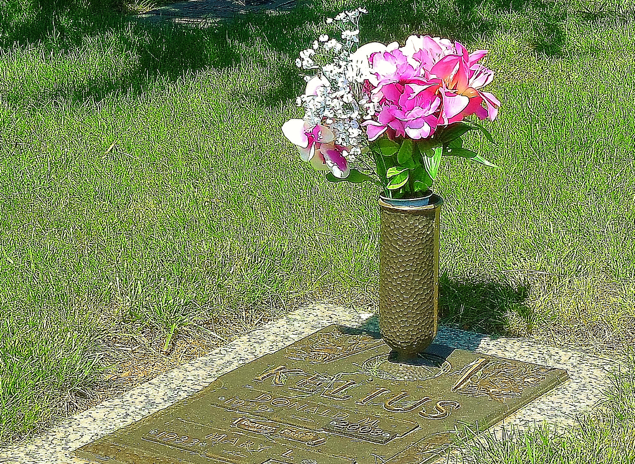What are the Four Levels of Hospice Care?

Hospice care is a special type of care provided to people in the last months or weeks of their life. It is focused on providing comfort and compassionate care to those nearing the end of life, rather than focusing on curing an illness or preventing death. Hospice care also provides emotional and spiritual support to patients and their families.
The goal of hospice care is not only to provide physical comfort, but also to improve the quality of life for both the patient and the family. It offers a range of services that help to ensure a dignified death and a loving environment for those affected. Such services may include symptom management, home care, emotional and spiritual support, bereavement counseling, and more.
It is important to understand that hospice care is not intended to extend a person's life, but rather to make the end-of-life journey as peaceful and meaningful as possible. Through hospice care, people are able to spend their last days in dignity and comfort with the support of trained professionals.
In this guide, we will be discussing the four levels of hospice care and what each one entails. We will also provide information about the necessary guidelines, the types of services offered at each level, and the ways in which these services can help those who are nearing the end of life. By the end of this guide, you will have a better understanding of what hospice care is and how it can benefit those who are approaching the end of life.
Hospice care is a special type of medical care designed to help terminally ill patients and their families cope with a terminal diagnosis. Hospice care includes a range of services, from physical and emotional support to chemotherapy or symptom management, depending on the level of care needed. It is designed to allow terminally ill patients to maintain an acceptable quality of life during their final days, weeks, or months.
Hospice care began in the 1960s as a way to provide compassionate care for terminally ill individuals in their last weeks and months of life. Since then, hospice care has grown and evolved to include four levels of care, all aimed at providing the best possible quality of life for the patient and their family. Each level has its own set of guidelines, goals, and services that must be provided.
Today, hospice care is available in many forms, including inpatient care in a dedicated hospice facility, home care with the assistance of trained professionals, and in rare cases, even hospice care provided in a hospital setting. In all these cases, hospice care is designed to provide comfort and support to the patient and their family throughout this difficult journey.
Hospice care is an important service that provides medical, personal, and emotional support for people who are nearing the end of their lives. It gives the individual and their family members quality care during a difficult time.
The four levels of hospice care range from preventative to terminal care. They include Level One, Level Two, Level Three, and Level Four. Each level has its own guidelines and services that must be met to ensure he patient is getting the best care possible.
Level One: Level one hospice care is preventative in nature and generally consists of education, home visits, and medication management. This type of care is usually appropriate when the individual has been diagnosed with a terminal illness or disorder and is expected to live six months or less. Level one services can help the individual and their family members understand their condition and adjust to the changes that come with it.
Level Two: Level two hospice care is used when the individual’s condition is deteriorating or they are experiencing a great deal of pain or discomfort. This level typically includes more intensive care such as in-home nursing care, hospice aides, and additional support services. Level two hospice care is appropriate when the individual has difficulty performing daily activities or needs additional assistance with medical care.
Level Three: Level three hospice care is for individuals who require specialized or constant care. Services at this level include 24-hour medical care, symptom management, and respite care. This type of care is usually appropriate when the individual needs frequent monitoring and is in the late stages of a terminal illness.
Level Four: Level four hospice care is the most intensive level and only used when the individual’s condition is very serious. Services at this level include respite care, symptom management, 24-hour medical care, and hospice care. Level four hospice care is usually necessary when the individual is too ill to remain in their home and requires around the clock care.
We hope that this guide has given you an understanding of the four levels of hospice care. It is important to remember that each individual's needs are unique and they may require different levels of care. If you have any questions about hospice care, please contact a healthcare professional for more information.
Level One hospice care is an important part of end-of-life care. It is designed to provide comfort and support for individuals with a life-limiting illness when they can no longer benefit from curative treatments or therapies. When it's appropriate, level one hospice care may be used as the primary source of care for managing a terminal illness.
Level one hospice care is often appropriate when:
- Curative treatment options have been exhausted
- The patient's primary health condition can no longer be managed by conventional treatments
- It is determined that the patient will benefit from palliative measures such as symptom management and pain control
- The patient's prognosis is 6 months or less
When level one hospice care is approved, a team of healthcare professionals will come together to support the patient and their family, providing vital information and emotional support during this difficult time. The team will typically include a primary physician, a hospice nurse, home health aides, spiritual counselors, social workers, and more.
The goal of level one hospice care is to ensure that the patient is as comfortable and relaxed as possible. This can involve providing medications to manage pain or other symptoms, such as nausea or shortness of breath. The team may also offer emotional and spiritual support to both the patient and their family.
In addition to offering direct care, the hospice team will provide ongoing education and training on caregiving techniques. Through this process, family members and other caregivers can learn how to best care for the patient and provide them with safety and comfort.
Level one hospice care is designed to provide support during the patient's final months, helping to ease the emotional burden of facing a terminal illness. With the help of this comprehensive care, patients can enjoy their remaining days surrounded by friends and loved ones.
Level Two Hospice Care: What to Expect
Level two hospice care is offered to patients who are living with a limited life expectancy and require more support and pain management services than those provided at level one.
In level two hospice care, the patient will receive increased medical and emotional support, along with a more comprehensive program of palliative services. The goal of level two hospice care is to provide the patient with sufficient relief from symptoms and distress to improve their quality of life.
Level two hospice care may be appropriate for patients who have been diagnosed with a life-limiting illness and whose condition has progressed to a point where they require frequent visits from a healthcare professional, such as an oncologist or hospice nurse. In these cases, a patient would receive visits from a hospice physician, nurse, social worker, and chaplain, in addition to appropriate aides, medical equipment, and medication.
The following services should be included in level two hospice care:
- Assessment and management of pain and other symptoms
- Regular visits and communication with the patient and their family
- Counseling and emotional support
- Spiritual support
- Help with personal care needs
- Help with meals and nutrition
- Medical equipment and supplies
- 24/7 on-call service
It is important to remember that each patient's situation is unique, so the services provided in level two hospice care may vary depending on the individual's needs. It is usually discussed and agreed upon between the patient, family, and healthcare provider.
Level Three Hospice Care
Level three hospice care is designed to provide a high level of support for those who have a life expectancy of six months or less, and require care and services to manage their symptoms. This type of hospice care is appropriate when the patient and/or family is not able to care for the patient in their home.
At the third level of hospice care, the patient is typically in a hospital, hospice center, or nursing home. The hospice team should be available 24 hours a day to provide pain management, symptom control, psychosocial support, and spiritual care. They should also provide emotional and spiritual support to the family.
The team should work to ensure that the patient is comfortable and has all the necessary resources for symptom management and end of life decisions. They should also provide bereavement services and grief counseling to the family. They can also assist with arranging funeral services.
Level three hospice care should include regular visits from the hospice doctor, nurse, social worker, and chaplain. If needed, other specialists such as physical therapists and occupational therapists may also be included in the team. The hospice team will develop individualized plans for each patient and provide medical, emotional, and spiritual care.
If you or someone you know is facing the end of life, hospice care can provide much needed comfort and support. It is important to speak to your doctor or health care provider about your options and the different levels of hospice care available.
Level Four Hospice Care
Level four hospice care provides the most comprehensive level of care for people nearing the end of life. It is also referred to as Crisis Care and is designed to provide immediate services and support in response to an unexpected change in condition. To qualify for this level of hospice care, the patient must be certified by a physician that they are facing a life-limiting illness with a prognosis of six months or less if the disease runs its normal course.
When appropriate, level four hospice care can provide several services such as:
- 24-hour on-call coverage from the hospice team
- Assistance with pain and symptom management
- Visiting nurse services
- Short-term inpatient care
- Physical, occupational, and speech therapy
- Respite care for caregivers
- Help with medication management
Level four hospice care should only be used when all other options have been exhausted. This type of care is not meant to replace other levels of care such as hospitalization or in-home care, but rather provide additional support in times of crisis. When the patient’s condition improves and stabilizes, they can return to the appropriate level of care.
Hospice care is an important option for people and their families who are experiencing a terminal illness. It is available in four levels, each providing different services and benefits. Level one focuses on pain management and provides support for the physical, emotional, and spiritual needs of patients and their families. Level two adds nursing care at home or in a facility, as well as additional services such as meals, homemaking, and medication management. Level three cares for those who require assistance with more complex medical needs and supplies specialized equipment and medications. Level four focuses on end-of-life care and provides care in the patient’s home or a hospice facility, with even more specialized services and comfort care.
While there are many options and resources available to help patients and their loved ones navigate hospice care, having a general understanding of the four levels helps provide clarity and direction when making decisions. We hope this guide has been helpful in providing information about the four levels of hospice care and gives you the confidence to make informed choices.
If you are looking for more information about hospice care, there are several resources available to provide you with valuable information. For national and international organizations dedicated to hospice care services, start with the National Hospice and Palliative Care Organization, which provides helpful information on hospice care and other related topics. Additionally, the Centers for Medicare & Medicaid Services can provide you with specific details about Medicare-covered hospice care services.
For more local resources, you can reach out to your local social service agency, state Medicare program, or independent hospice care providers. These organizations can offer you additional information on the four levels of hospice care, as well as provide experienced guidance as you navigate the process of choosing the right level of hospice care for your circumstances.
You might also like this article:






